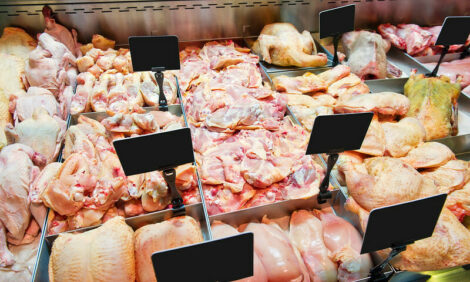



Economics of PRRS in Growing Pigs Is Severe for Producers
ANALYSIS - At the North American PRRS Symposium, a key focus was how to control PRRS in growing pigs because the economic impact is exceptionally high for this population of pigs.Reid Philips, PRRS technical manager with Boehringer Ingelheim Vetmedica, speaks to ThePigSite's Sarah Mikesell at the North American PRRS Symposium held in Chicago in December.
PRRS is a single-stranded RNA virus that has both a reproductive and a respiratory impact in swine herds.
"As a reproductive pathogen, PRRS can cause reproductive failure in breeding herds and cause abortions or abortion storms and weak, listless, non-viable pigs born to sows that do farrow," said Dr. Reid Philips, PRRS technical manager with Boehringer Ingelheim Vetmedica. "It can cause sow mortality and in the growing pig, it causes a respiratory complex. But by itself, it will cause interstitial pneumonia, which tremendously impacts the health and performance of pigs. The two-pronged approach to the virus can cause devastating consequences in the breeding herd as well."
The economic impact of PRRS is severe for producers with infected herds. Darryl Holtkamp, DVM and associate professor at Iowa State University, indicated PRRS costs the US swine industry more than $650 million annually, which equals about $1.8 million dollars per day.
"Dr. Holtkamp also suggests about 65 per cent of those costs are in the growing pig population" said Dr. Philips."We're at a PRRS symposium and much of the focus has been on how to best control the virus, not only in breeding herds, but in growing pigs because the economic impact is so high there, and they represent a large majority of the pig population."
Controlling the virus and improving the health, performance and profitability in growing pigs is important because it's a population that reservoirs a lot of virus. In an effort to reduce risk of shed transmission and spread of the virus within and between population, the industry is considering how to use control methodologies that reduce the amount of circulating virus within growing pigs.
"PRRS is a very challenging virus, so we look at a holistic or whole-herd approach including controlling it and stabilizing breeding herds and weaning negative pigs. If those pigs are later moved to sites or locations where the risk of PRRS infection is high, they should be vaccinated so they can mitigate the consequences of those infections," he said.
"Vaccine and vaccine-derived immunity plays a really important part in that control strategy along with other complementary components of PRRS control, including biosecurity, pig flow and other things. If you can package all those things into a really good PRRS control program, you'll definitely move the needle and improve performance relative to PRRS."
Dr. Philips spoke at the North American PRRS Sysmposium, sponsored by Boehringer Ingelheim.










